The ZEB suspension fork (along with the Pike and Lyrik) was overhauled for 2023 to incorporate a series of significant changes, including a new damper and revamped air spring.
As the name suggests, the Ultimate sits at the top of the pile when it comes to features and pricing. It’s aimed squarely at hard-charging enduro racers and trail riders thanks to the 150 to 190mm of suspension travel on offer.
The changes have left the ZEB Ultimate fork feeling composed and controlled when you need it most, and the adjustment available enables noticeable changes with every click of the dials.
However, some riders may not be able to extract the most from the ZEB Ultimate because the damping may be too firm. RockShox say it's looking into altering tunes to benefit lighter riders, though.
RockShox ZEB Ultimate fork details and specifications
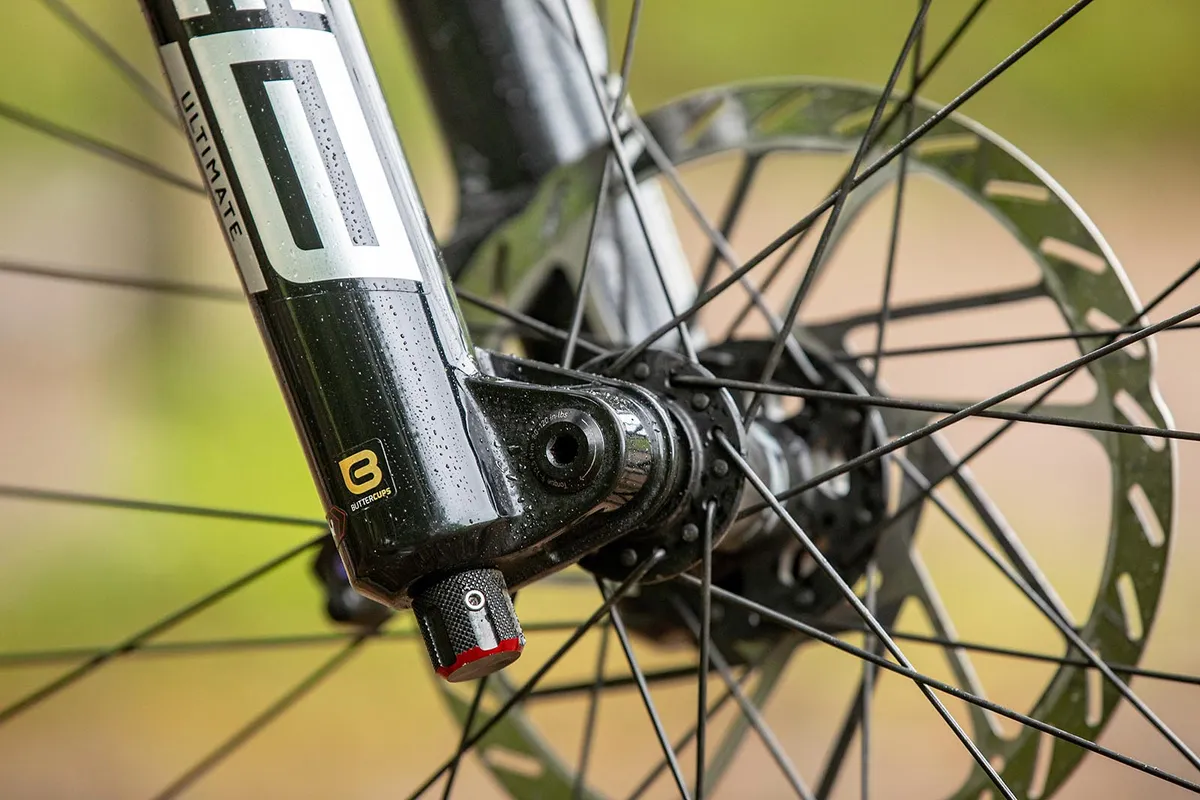
RockShox offers the ZEB Ultimate in five different travel options (150, 160, 170, 180 and 190mm) for either 27.5in or 29in wheels. There are also two offsets to choose from for 27.5in wheels (pick from 38mm or 44mm) and just the one 44mm offset for 29in wheels.
All ZEB Ultimates use the 15x110mm thru-axle as standard. At the dropouts, RockShox has carved away enough space to accept Torque Caps (larger hub end caps developed by SRAM, which are said to provide a more solid connection between fork and wheel).
If your hub doesn’t feature these, RockShox provides two small blanking plates that take up additional Torque Cap spacing and make slotting regular end caps in a little more accurate and less fiddly.
All-new damper and air-spring designs
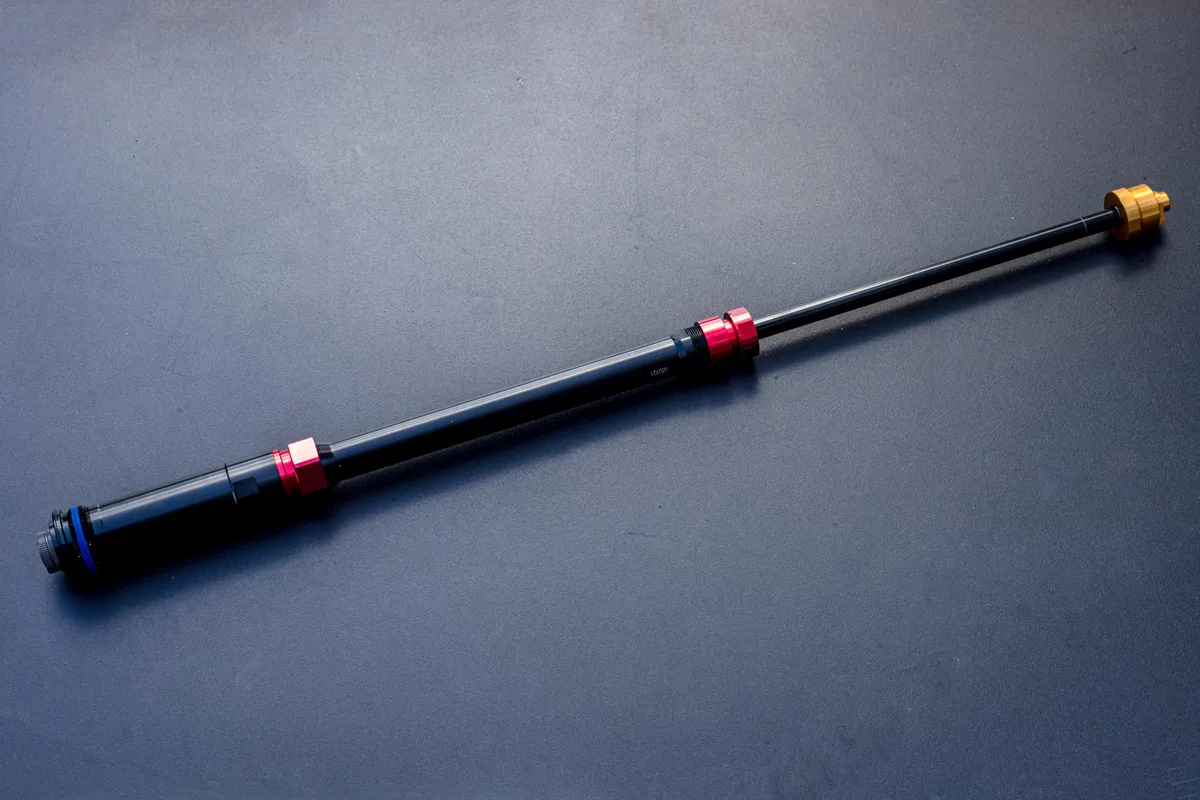
Inside, it’s all change with the introduction of the new damper and spring assemblies.
The new Charger 3 RC2 damper uses a coil-spring backed internal floating piston (IFP) rather than the sealed-cartridge design used in the Charger 2 and 2.1, which featured a bladder to keep the air and oil separate within the system.
RockShox has also created two new valve assemblies to control the high- and low-speed compression damping, which it says helps to keep the adjustments fully independent of one another. An increase in oil flow through these assemblies is said to be controlled more accurately.
Visually, the new damper also includes chunkier, machined adjuster dials (including the rebound dial at the base of the fork). These feel better in the hand when it comes to twiddling them. There are five clicks of high-speed compression damping, 15 clicks of low-speed compression damping and 18 clicks of rebound damping.
There’s a new air spring, too, in the shape of the DebonAir+ spring. This is aimed to find the balance between the older DebonAir spring launched in 2018 and the revamped spring introduced in 2020. That comes down to switching the position of the bypass port (which is where air swaps from the positive to negative air chambers in order to equalise), as well as altering the positive and negative air-chamber volumes.
And there’s more…
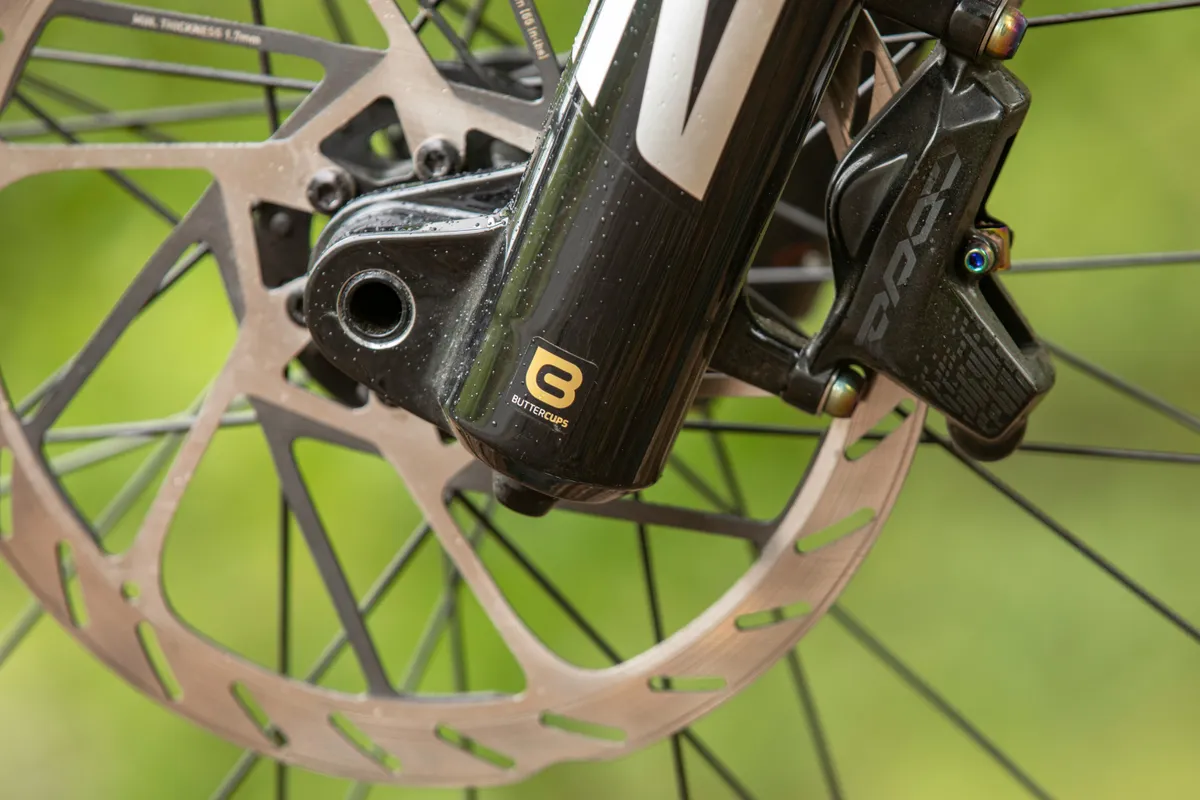
At the base of both the spring and damper (within the lower legs) sit the ButterCups. These flashy little assemblies house small rubber bumpers, which provide around 4mm of vertical compliance. The idea here is to help cushion the rider from low-amplitude, high-frequency vibration.
The Ultimate-level fork also gets the ‘Ultimate Bushing Package’. These, according to RockShox, are 53 per cent longer than regular bushings, which should help distribute loads better over a larger area and further reduce friction – the worst enemy of every mountain bike suspension fork.

Just like Fox’s 36 and 38 forks, RockShox has cast small buttons into the rear of the lower legs, known as ‘Pressure Relief Valves’. Pressing these should release any excess air that builds in the lower legs when riding in hot climates or at altitude.
With a cut steerer, my sample fork weighed 2.38kg.
How we tested the RockShox ZEB Ultimate fork
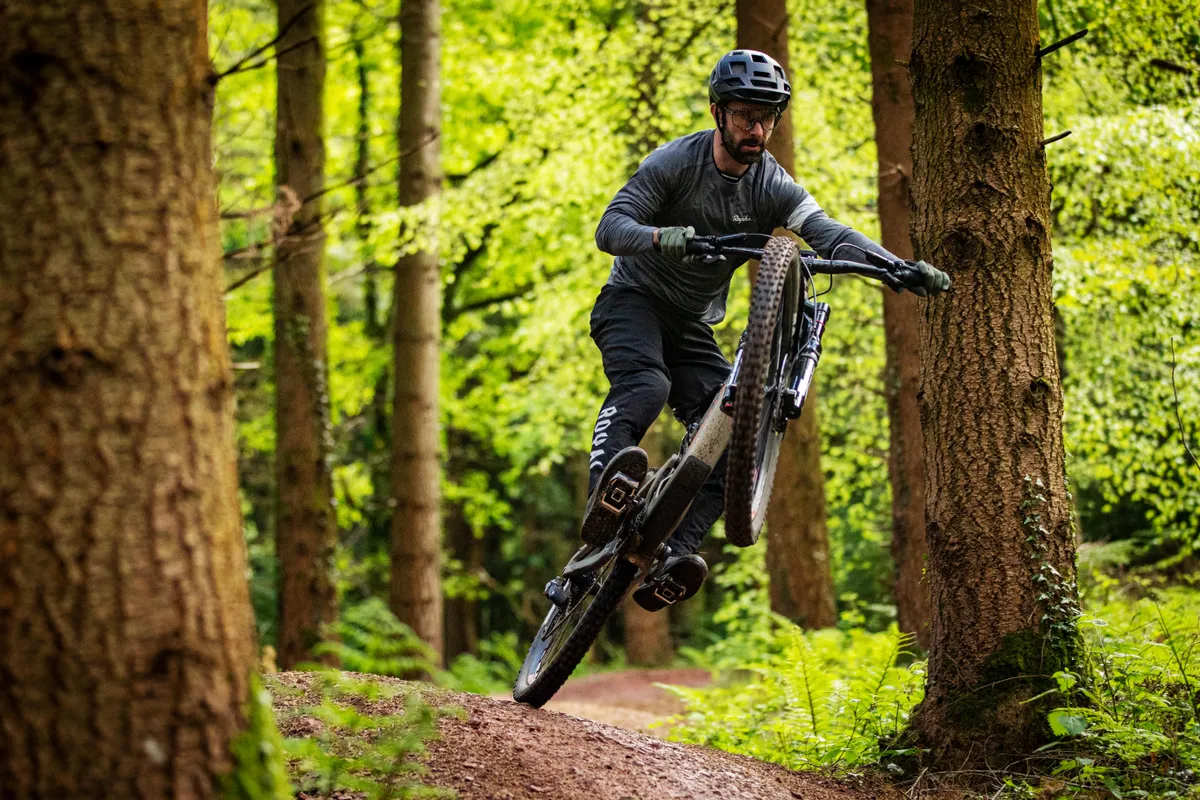
I tested the RockShox ZEB Ultimate throughout the summer and winter of 2022/2023.
In a bid to expose the fork to the widest variety of terrain possible, I rode in various locations, including everything from my local root-riddled singletrack through to high-speed alpine descents that proved incredibly demanding on both the bike and body.
Some of my testing was done back-to-back with the older ZEB Ultimate (which uses the Charger 2.1 damper), as well as other forks such as the Fox 38 Performance Elite. I also rode multiple diffeerent ZEB Ultimates (bolted to different test bikes) to check for any anomalies between them.
RockShox ZEB Ultimate fork setup

For context, I weigh 68kg. With the 180mm version of the ZEB Ultimate, I settled on using one volume spacer and 51psi in the air spring.
I was two clicks from fully open on the low-speed compression damping, while I had the high-speed compression and rebound damping both fully open.
It’s clear then, that lighter riders, like me, don’t need to use the adjusters all that much. In fact, I’d argue RockShox could move the damping window and make it more usable for lighter riders.
More than anything, I wanted the fork to rebound a little quicker. I achieved this initially by running a slightly higher spring pressure than I finally settled on, though this threw the overall balance of the bike out and made the front end ride too high.
After speaking with RockShox, I went to Sprung Suspension to have the fork tuned. Sprung switched to a lighter-weight oil (7wt down to 3wt) and removed the face shim from the rebound assembly. They also checked bushing sizing.
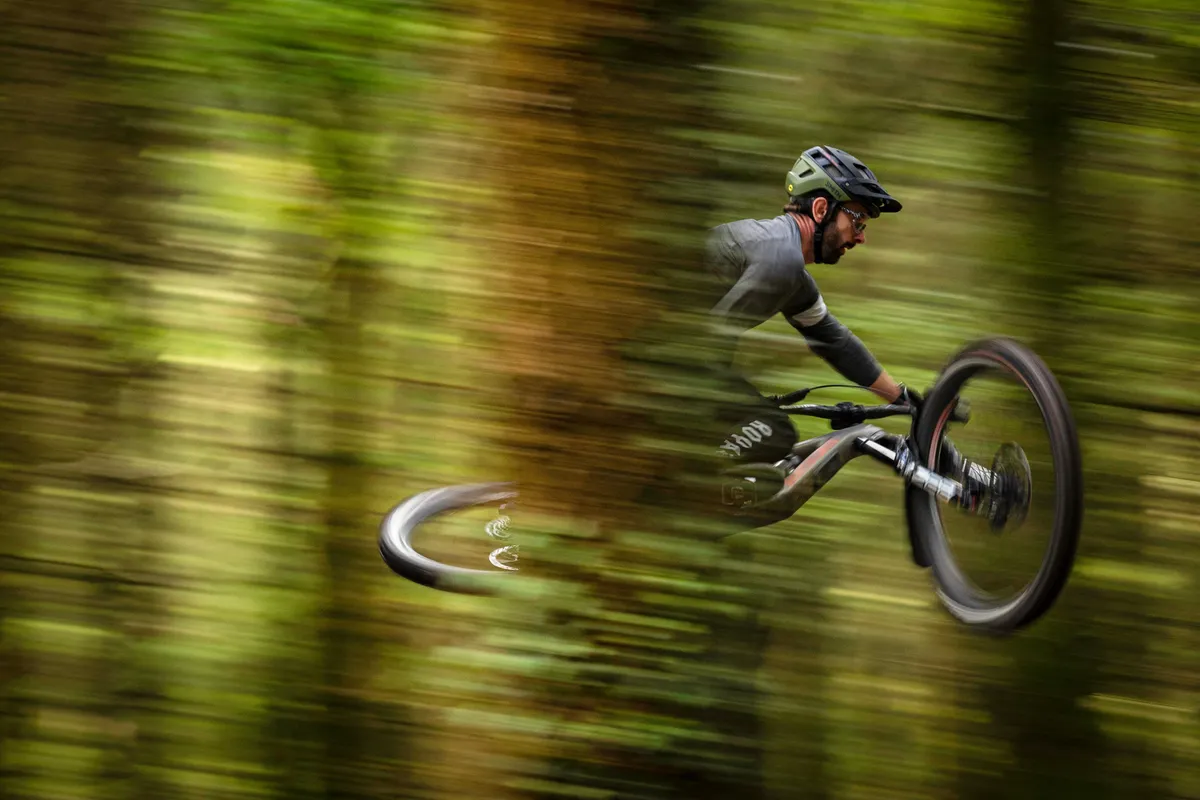
I still have the rebound adjuster fully open (something I do with Fox 36 and 38 forks, too, but didn’t need to on the older ZEB with the Charger 2.1 damper). The rebound speed feels spot-on for me now.
Other testers, who are heavier than me, haven’t had the same issue (though have been running the fork with all but the low-speed compression damping adjusters fully open). I don't think moving to a slightly lighter compression and rebound tune would have a negative impact because there’s still plenty of very usable adjustment on tap.
I spoke to RockShox and was told the brand is looking to alter tunes to better suit lighter riders, meaning soon enough this may not be an issue for anyone.
I’ve since ridden other ZEB Ultimate forks on test bikes that haven’t been tuned and got on with them really well. However, these were run with all adjusters fully open in order for me to reach my preferred feel.
RockShox ZEB Ultimate fork performance

Supple and responsive
Small-bump sensitivity is seriously impressive. It's almost silent, too, thanks to the changes RockShox has made to how oil flow is managed during the rebound stroke.
The ZEB Ultimate sinks easily into the first part of its travel, and does a great job of tracking trail imperfections, keeping your tyre in constant contact with the trail. It’s not quite as fluttery as its predecessor, though, but not far off.
As you move deeper into the travel, there’s plenty of support on offer, which helps you maintain a composed, stable position on the bike.
This really comes to the fore when making your way down steep, beaten-up trails where you’re constantly loading the front end of the bike as you drop into catch berms or navigate slow-speed drops that are prone to pitching your weight forward.

Through successive hits, the ZEB Ultimate fork recovers quickly and remains very controlled. While there’s no denying its predecessor may have felt more active in some scenarios, it never felt quite as controlled, especially in situations where you’re throwing the bike around or making rapid changes of direction.
Land deep into nasty root spreads or rock gardens, and you’ll be surprised by just how well your hands feel isolated from the chaos going on beneath your front tyre.
Similarly, I never struggled with hand pain or discomfort when riding long tracks in the mountains, where the ZEB manages to soak up so much of the unpleasant chatter, keeping your upper body feeling that bit fresher.
During back-to-back comparisons, I felt I needed to move my weight around more to control what the bike was doing with the older fork in place. The bike didn’t feel as balanced, whereas the current fork feels a bit more composed (possibly down to the increase in support from the spring and damping). This meant I could maintain a more neutral body position when riding the same bits of trail.
Deeper still into the stroke, you can really feel how progression builds, and how controlled those final few millimetres are (assuming you’ve set it up right).
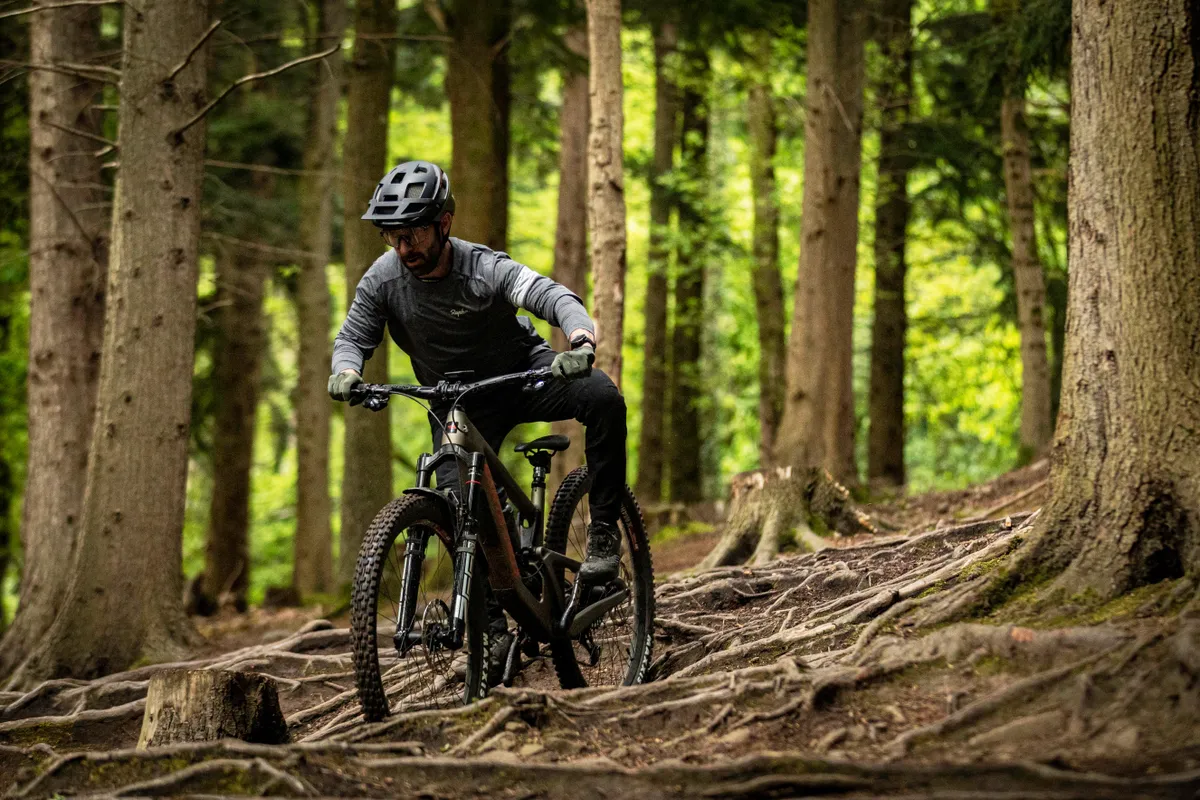
Where some forks can ramp quickly towards the end of the travel and feel quite harsh, others can feel almost perfect until they fully bottom out with a harsh metallic clunk (adding volume spacers helps here, but doesn’t necessarily solve the issue).
With the ZEB Ultimate, it feels the progression is very gradual throughout the stroke. That means when I’m really calling on that last bit of travel, I can do so with confidence and continue to push rather than ease off and wince as the fork fully compresses or, alternatively, have to take a battering through my hands and arms.
That, to me, is a real win and where I’d argue this fork outshines others.
The stout 38mm chassis feels accurate and stiff when it matters. While I had no real issues with the skinnier 35mm chassis of the RockShox Lyrik for similar sorts of riding (it was a very forgiving, comfortable fork), the new ZEB hasn’t felt harsh or caused me any hand pain issues, even on long alpine descents.
Useful adjustment

There’s certainly less in the way of interference as you alter compression settings. I altered them continuously throughout testing and was consistently impressed by how well isolated those changes could be felt and the significance (especially of the high-speed compression damping) of which they could be felt.
While the adjusters are simply nicer to use compared to the Charger 2.1 equivalents, it feels as though they’re more meaningful and noticeable, too. Need a bit more control through the front end when smashing into root spreads? A click of high-speed compression should help.
Front end needs a bit more support when slithering down a steep trail? A couple of clicks of low-speed compression will genuinely help prop it up.
At 68kg, though, I ended up backing the one click of high-speed compression I was using off, just to help improve comfort over the longer, rougher trails.
That’s because, while the damping helps to add control, it does transmit more through your hands. Winding this helped improve comfort when I was particularly fatigued.
Again, shifting that damping winding would help most riders make more of how effective these adjusters can be.
As for the pressure-relief valves, well, I can confirm they work. Having used the fork during the Stone King Rally, where we were close to 3,000m at the start of some stages, using these bleed valves helped reduce air build-up and kept them running consistently.
How does the RockShox ZEB Ultimate fork compare?
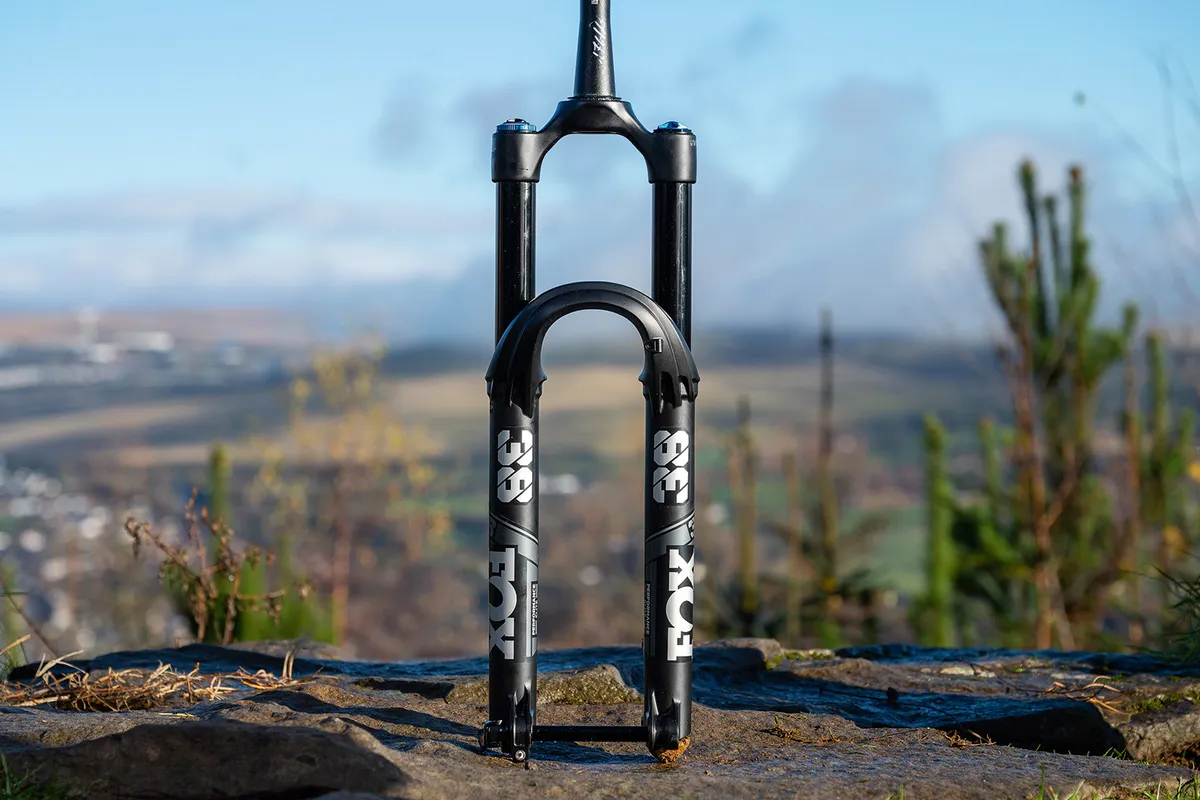
I’ve done numerous back-to-back sessions with the ZEB Ultimate and its predecessor, along with Fox 38 Performance Elite forks and other 2023 ZEB Ultimate forks that have since arrived on test bikes.
As mentioned above, the older ZEB Ultimate can, in certain situations, feel more active. While I’m fully open on the rebound damping on the new fork, I would be around the halfway mark with the older fork, somewhere in the region of 22 clicks of adjustment.
This would leave both forks rebounding at what felt like a similar speed, though if I wanted to speed the old ZEB up I could. That isn’t possible with the new fork.
However, the older fork didn’t feel as supportive or as controlled, and required more low-speed compression damping to be added (or more spring pressure) in a bid to stabilise the bike. This hasn’t been the case with the new fork.

I’d say the new fork feels close to, if not as forgiving early on in its stroke. Along with other factors, this helps to make it feel comfortable in fast, chattery sections of trail that continue as far as the eye can see – no bad thing when you consider the chunky 38mm chassis.
A final note on the damping. While I’ve talked about shifting the damping window to better improve the usable range of adjustment here, the same can be said for Fox’s 36 and 38 forks, because I run all the dials on those fully open. That means RockShox isn’t alone with this issue.
RockShox ZEB Ultimate fork bottom line

There’s no getting away from the fact that the RockShox ZEB Ultimate 2023 fork is a serious operator, especially when the trails are particularly rough.
It’s not all plain sailing, though. Lighter riders, like me (and, arguably, heavier ones, too) could benefit from a lighter compression and rebound tune.
Otherwise, to get the required settings means having the dials fully open, which limits future tunability. This is a shame, especially because the adjustment on offer works so effectively in use.
But it's good to know RockShox is listening and looking actively at ways it can resolve these issues. What that means for future fork tunes we’re not totally sure of just yet, though.
With all that said, even in the stock form, the ZEB Ultimate is still one of the best suspension forks I’ve ridden. The composure, control, support and gradual build in progression as you get deeper into the travel help to outweigh any negatives.
It’s cheaper than the leading rivals from Fox and Öhlins, too, and delivers as much confidence as, if not more than, these, too.
A lighter tune would be the icing on the cake and elevate the ZEB Ultimate to a true five-star status. However, for now, it's great but not quite perfect.
Product
| Price | €1159.00, £1119.00, $1253.00 |
| Weight | 2.38kg |
Features
| Spring type | air |
| Wheel size | 29in_700c |
| Travel | 180.0000 |
| Travel | MILLIMETER |
| Stanchion diameter | 38.0000 |
| Stanchion diameter | MILLIMETER |
| Features | Travel options: 150, 160, 170, 180 and 190mm for both 27.5in and 29in wheels Off set options: 38, 44mm for 27.5in or 44mm for 29in wheels>BR> |
